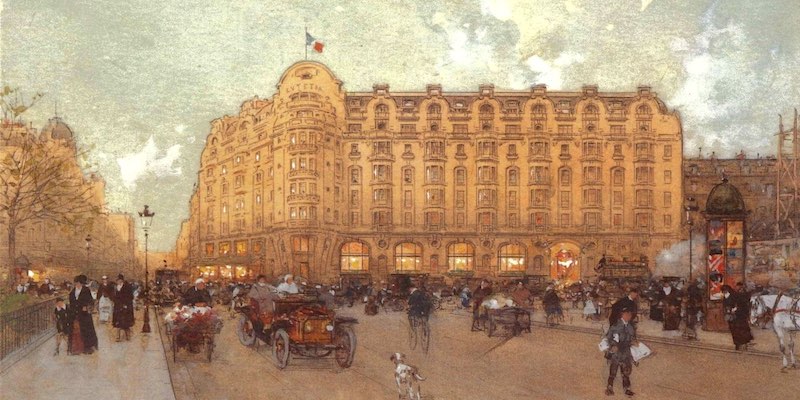10 Belle Epoque Wonders – 19th-Century Paris At Its Most Glorious
10 Belle Epoque Wonders Of Paris
The year is 1900 and the world is abuzz with the advancements in the areas of science, art, and industry. The 1900 Paris Exposition Universelle welcomes the world to Paris where it showcases the best of these achievements in the form of the brand new Paris Metro system, the Petit Palais & Grand Palais, Pont Alexandre III, and Le Train Bleu, the jewel of a restaurant in the sparkling new the Gare de Lyon.
![]()
Our Top-Rated Paris Experiences
1. Seine River Romantic Dinner Cruise… With live music & champagne
2. Cheese and Wine Tasting in a Private Paris Cheese Cellar… Learn from a Master Affineur
3. Louvre Masterpieces Tour… Skip the lines for the best experience
4. Dinner Cruise with Maxim's of Paris… An Art Nouveau experience from 1900
Journey to the Belle Époque
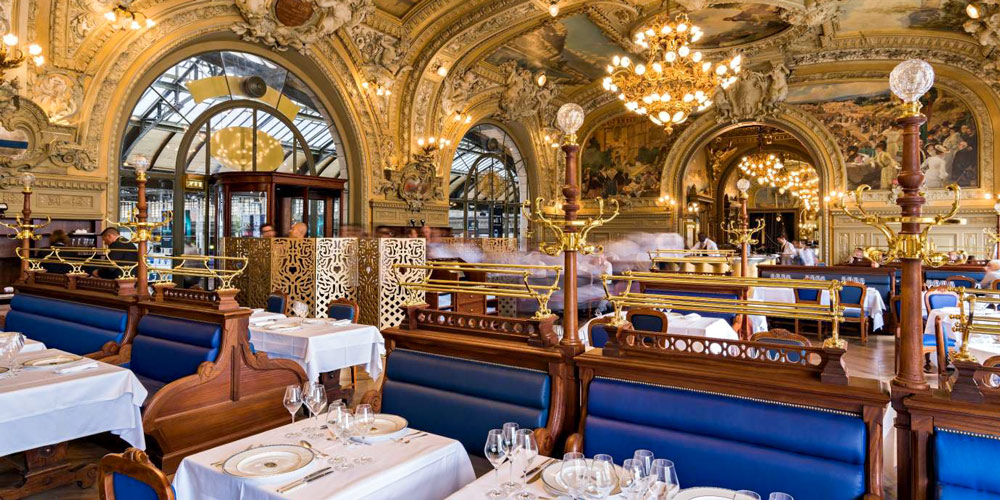 Inside restaurant Le Train Bleu, photo from Le Train Bleu
Inside restaurant Le Train Bleu, photo from Le Train Bleu
Today in Paris — unlike in other cities who have been too eager to tear down historic landmarks — you can still take a journey to the Belle Époque to marvel at the wonders of the era. Come with us on a virtual tour of the top 10 Belle Epoque wonders — restaurants, museums, department stores, churches, and Metro stations that highlight the artistry of this marvelous golden age.
![]()
Discover What's On When You're Here...
• January... |
• February... |
• March... |
• April... |
• May... |
• June... |
• July... |
• August... |
• September... |
• October... |
• November... |
• December... |
Discover What's On When You're Here
• January...
|
• February... |
• March... |
|---|---|---|
• April... |
• May... |
• June... |
• July... |
• August... |
• September... |
• October... |
• November... |
• December... |
1. Le Train Bleu
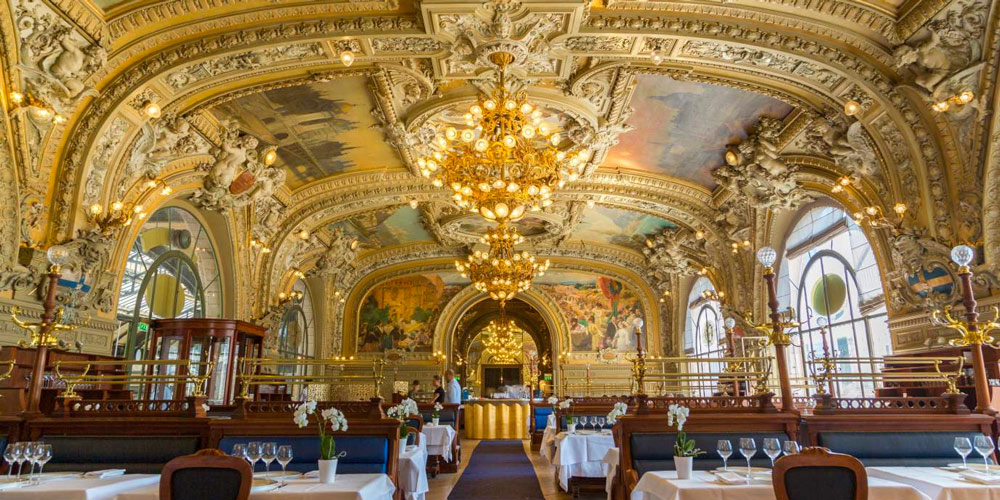 Dining room at Le Train Bleu, photo from Le Train Bleu
Dining room at Le Train Bleu, photo from Le Train Bleu
The Belle Epoque signaled the age of travel. New train stations were built at lightning speed and the restaurants within them were decorated beyond anything people had seen up to that point. Artisans worked around the clock to create the lavish carvings, moldings, chandeliers, and frescoes to give the space the appearance of a palace.
This was certainly the case with Gare de Lyon and its restaurant Le Train Bleu, where nearly 30 famous French artists toiled on the decor and fifty paintings were commissioned from prominent artists of the day. Since its debut in 1901 (just missing the Exposition Universelle) celebrities have flocked to Le Train Bleu — from Coco Chanel and Brigitte Bardot; to Marcel Pagnol and Catherine Deneuve. The restaurant recently underwent a massive renovation to restore the original decor.
- Gare de Lyon
- 12th Arrondissement
![]()
Romantic Dinner Cruises In Paris
|
VIP Dinner Cruise with Bateaux Parisiens |
Dinner Cruise by Maxim's of Paris |
|
VIP Dinner Cruise with Bateaux Parisiens |
2. Printemps
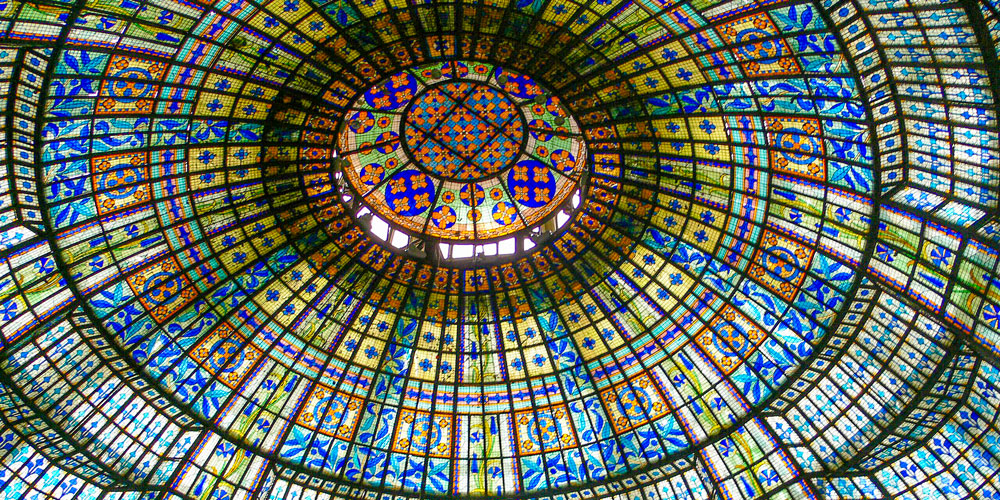 The cupola at Printemps Haussmann, photo Wikimedia by Andreas Praefcke
The cupola at Printemps Haussmann, photo Wikimedia by Andreas Praefcke
Printemps, founded in 1865, was a dazzling architecture achievement by architects Jules Jaluzot and Jean-Alfred Duclos. It was the first store to be equipped with electricity and elevators. But it's the historic Art Nouveau dome that still draws the crowds today. In 2006, a grand renovation brought together artisans — stonecutters, mosaic artists, gilders, and master glassmakers — to modernize Printemps while retaining its Belle Epoque glory.
- 64 Boulevard Haussmann
- 9th Arrondissement
- Printemps Website…
3. Galeries Lafayette
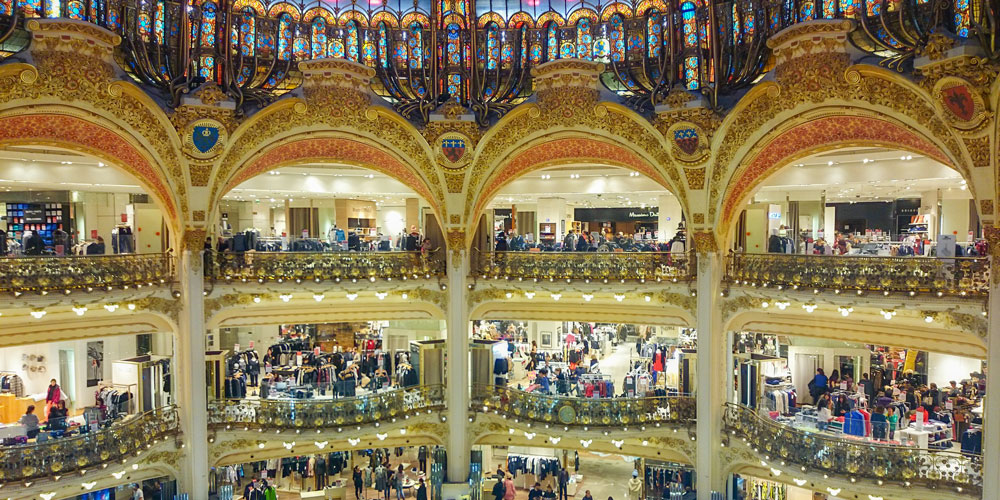 At Galeries Lafayette on Boulevard Haussmann, photo Wikimedia
At Galeries Lafayette on Boulevard Haussmann, photo Wikimedia
Just a few decades after Printemps had launched, Galeries Lafayette unveiled its flagship store essentially right next door on Boulevard Haussmann. The vast Art Nouveau glass- and steel-domed ceiling (built in 1912) was designed by architect Ferdinand Chanut. The dome fills an entire city block and features an array of peacock-colored panels with rich blues and bright reds and oranges.
Also not to miss is the lavish main staircase inspired by Palais Garnier, although it's the dome that remains the emblem of the store. At one time Galeries Lafayette was the second most popular tourist attraction in Paris, after the Eiffel Tower.
- 40 Boulevard Haussmann
- 9th Arrondissement
- Website…
![]()
Our Most Popular Day Trips from Paris
|
Spend a Day in the Champagne Region |
Visit the Historic D-Day Beaches |
|
Visit the Historic D-Day Beaches |
4. Théâtre des Champs-Élysées
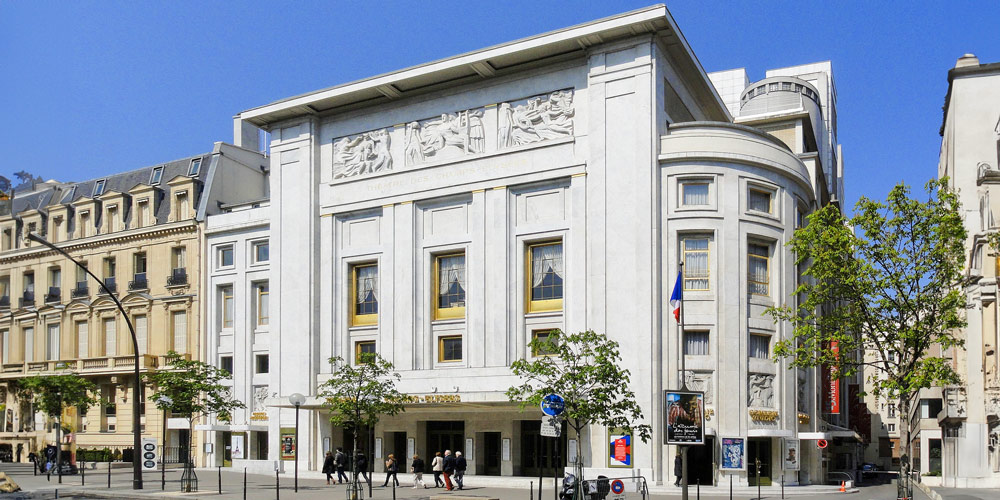 Théâtre des Champs-Élysées, exterior, photo Wikimedia by Coldcreation
Théâtre des Champs-Élysées, exterior, photo Wikimedia by Coldcreation
In 1913, architect Auguste Perret completed his masterpiece, the Theatre des Champs-Elysées, located just off the famous avenue. It started out with a bang, or rather, with a riot, for in its first year, Stravinsky's controversial The Rite of Spring was performed here by Diaghilev's Ballets Russes, such a shocking change from the usual ballets of the time that legend has it a riot ensued.
An interesting fact is that this was the first Art Deco building in Paris. Its plain appearance was a radical departure from the decorative Art Nouveau style. The exterior bas relief is by French sculptor Antoine Bourdelle and the dome is by Symbolist painter Maurice Denis.
The theatre is still used for classical music performances today and it's a fascinating experience to attend a concert here when you're in Paris
- 15 Avenue Montaigne
- 8th Arrondissement
5. Hotel Banke
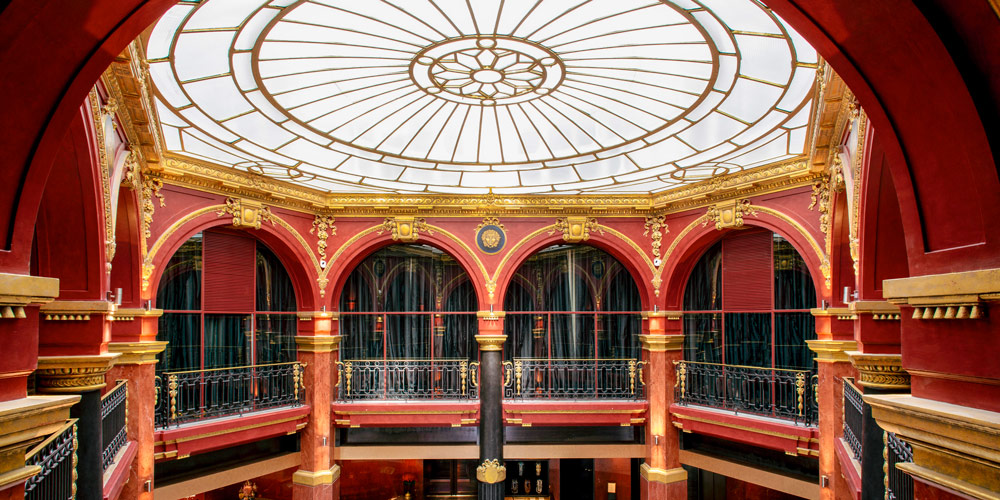 Inside Hotel Banke, photo Hotel Banke
Inside Hotel Banke, photo Hotel Banke
Located a short walk from the Palais Garnier, the elegant 5-Star Hotel Banke has managed to preserve its Belle Epoque design features. Most of the original structure of this grand building has been preserved, from the facade to the mosaic floor found in the expansive lobby. Once a bank (as you probably guessed), the building was transformed into a hotel in 2009, retaining its glorious glass cupola.
- 20 Rue la Fayette
- 9th Arrondissement
![]()
Skip-the-Line at the Louvre Museum
|
The Louvre's Greatest Masterpieces |
Louvre Skip-the-Line Tour |
|
The Louvre's Greatest Masterpieces |
6. Pont Alexandre III
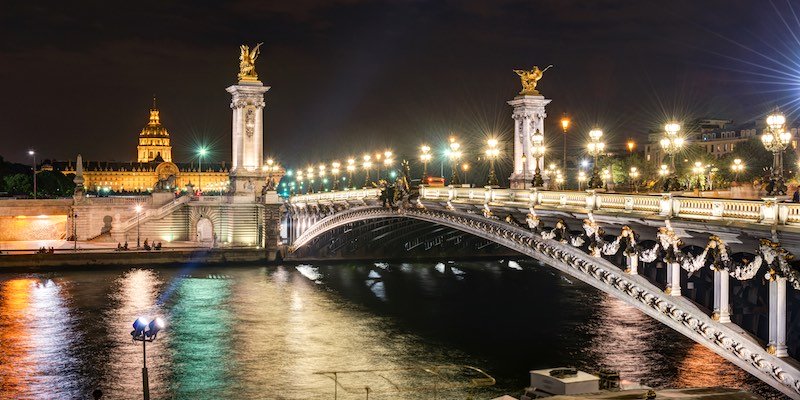 Pont Alexandre III at night
Pont Alexandre III at night
This ornate bridge, which connects the Petit Palais and the Grand Palais with Les Invalides, also debuted for the1900 Paris Exposition Universelle. The structure, designed by Joseph Cassien-Bernard, offers a beautiful collection of Art Nouveau treasures — gilded lamps, cherubs, nymphs, and statues. It was named for the Russian tsar to recognize the friendship between the two countries.
7. Hotel Lutetia
The grande dame of Belle Epoque hotels, the Lutetia, situated in the Saint-Germain quartier, kitty-corner from Le Bon Marché, recently completed a multi-year, multi-million euro renovation.
The building's €200 million facelift was carefully planned to protect the Belle Epoque design elements. Look for the decorative reliefs on the exterior and the pretty, stained-glass windows in the interior. Even if you're not staying here, you can dine at the new Art Deco courtyard restaurant.
![]()
Find Hotel Deals for Your Dates in Paris
Check the complete list of Paris hotels to find current sale prices on rooms in every arrondissement. Save 10%, 20%… or even more! |
Paris Hotel Deals |
Find Hotel Deals for Your Dates in Paris
Save on hotels in every arrondissement of Paris – the Latin Quarter, Saint Germain, the Right Bank, the Marais, near the Eiffel Tower. Save 10%, 20%… or even more! |
8. Brasserie Vagenende
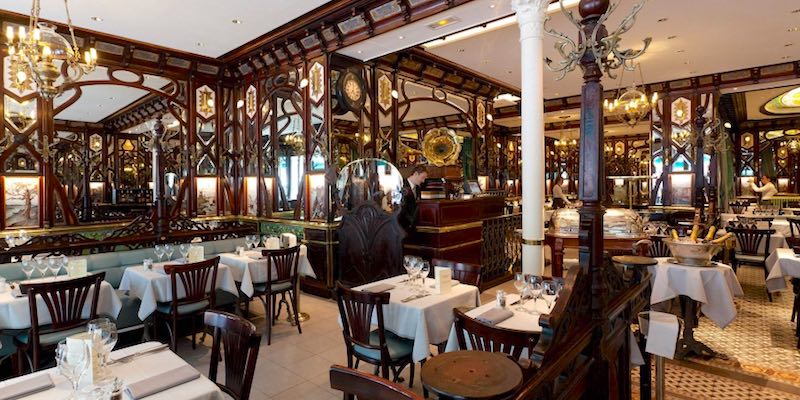 Dining room at Brasserie Vagenende, photo Brasserie Vagenende
Dining room at Brasserie Vagenende, photo Brasserie Vagenende
Listed as a historic monument, this brasserie is virtually unchanged from when it opened in 1904. Come for the sumptuous surroundings with decorative wood panelling, etched mirrors, and a glass ceiling, and stay for the classic bistro fare — oysters, onion soup, beef bourguignon, choucroute garnie.
- 142 Boulevard St-Germain
- 6th Arrondissement
- Website…
9. Hector Guimard's Art Deco Paris
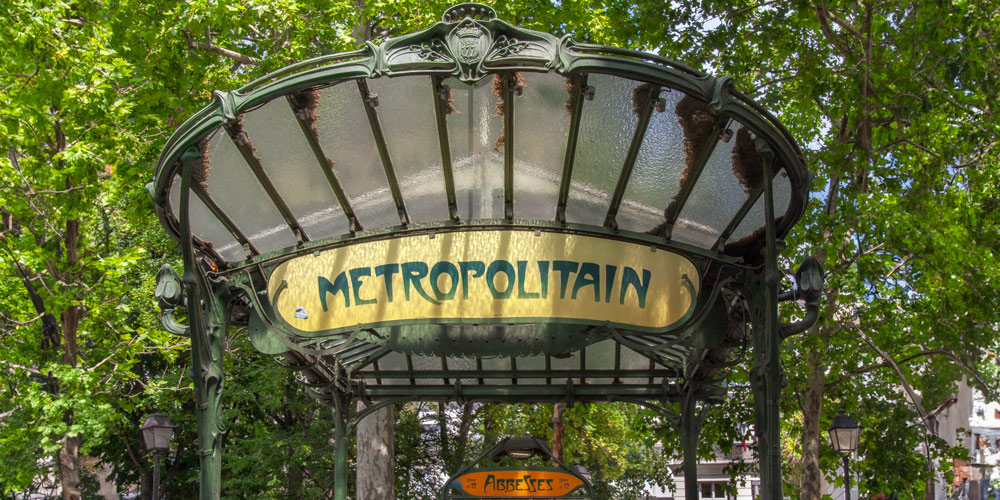 Guimard Metro entrance at Abbesses, photo by Mark Craft
Guimard Metro entrance at Abbesses, photo by Mark Craft
A prominent architect of his time, Hector Guimard is most remembered for his canopied Art Nouveau Metro stations. You can still see his Metro entrances scattered across Paris — for instance at Cité (Line 4) on Ile de la Cité and at at various stops along Line 2. At Metro Abbesses in Montmartre (Line 12) the Art Nouveau entrance featuring a glass and leaf-green steel canopy. Another decorative entrance worth seeing is at the western end of line 2 at the Porte Dauphine Metro station in the 16th. (Of the 141 Metro entrances Guimard created, 57 survive in Paris today.)
While you're in the 16th, why not take a self-guided tour of Guimard's Belle Epoque buildings? Head to the Castel Béranger, the first recognized Art Nouveau building at 14 Rue la Fontaine, also in the 16th Arrondissement. Note the intricate turquoise steel doorway and the decorative balcony railing of this 1898 residential building. If you could get inside you'd also see the decorative spiral staircase and the fountain in the interior courtyard.
Across the street at 17 Rue de la Fontaine is another Guimard building, the tiny Cafe Antoine, with an authentic zinc bar. Continue to 122 Avenue Mozart to see Guimard's own residence from 1913 to the 1940s. His dining room set is now displayed at the Petit Palais.
![]()
Two Of The Most Popular Paris Experiences
|
VIP Dinner Cruise with Bateaux Parisiens |
Versailles with Priority Access + Gardens |
The Most Popular Paris Experience
|
VIP Dinner Cruise with Bateaux Parisiens |
10. Église St-Jean de Montmartre
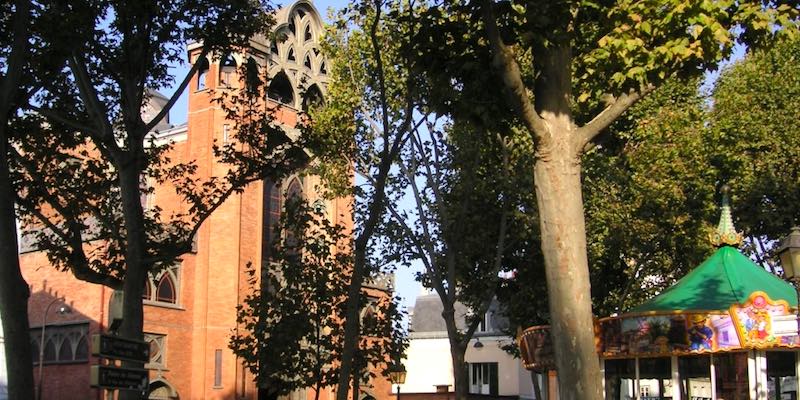 Photo from Église St-Jean de Montmartre
Photo from Église St-Jean de Montmartre
Just across from Guimard's Abbesses Metro station is this unusual red-brick Art Nouveau church completed in 1904. St-Jean de Montmartre is also one of the first churches to be built using reinforced concrete. Designed by architect Anatole de Baudot, the brick and ceramic structure exhibits features of Art Nouveau design, including intricate stained glass. Free guided tours of the church are offered every fourth Sunday of the month. Check the website for details.
- 19 Rue des Abbesses
- 18th Arrondissement
- Website…
BONUS – Pere Lachaise Cemetery
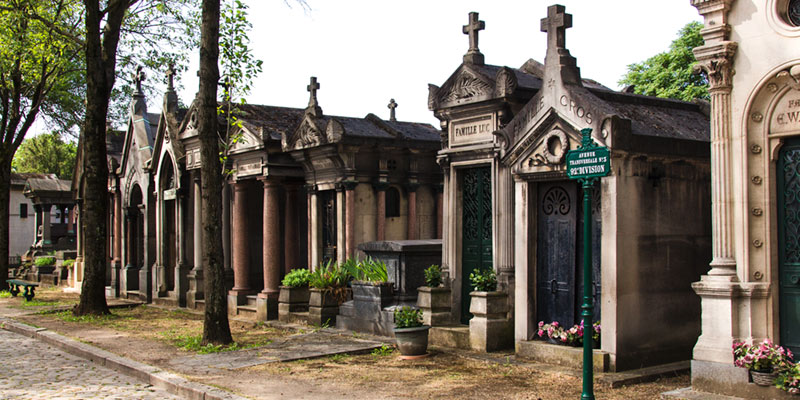 Pere Lachaise Cemetery, photo by Mark Craft
Pere Lachaise Cemetery, photo by Mark Craft
We know we promised you the top ten, but here's a bonus Belle Epoque related landmark. It's not a building, but it is where many Belle Epoque luminaries are buried. Proust, Colette, and Toulouse-Lautrec's Moulin Rouge muse, Jane Avril, are found here, at one of the world's most visited cemeteries. We went on one of our very best Paris guided walking tours at Pere Lachaise and we highly recommend it.
Paris Planning Guides
 Book an Airport Transfer
Book an Airport Transfer |
 Glorious Dinner Cruises
Glorious Dinner Cruises |
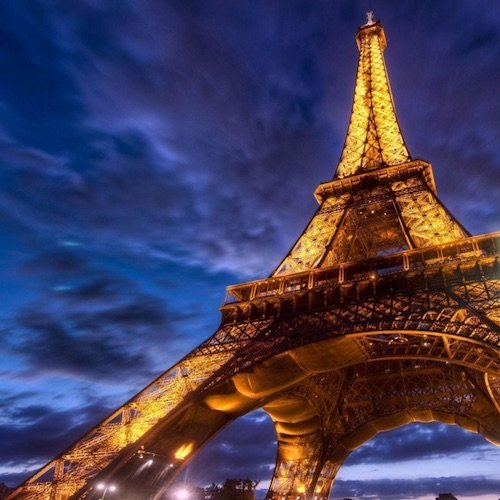 How to Skip the Lines
How to Skip the Lines |
 VIP to Champagne
VIP to Champagne |







